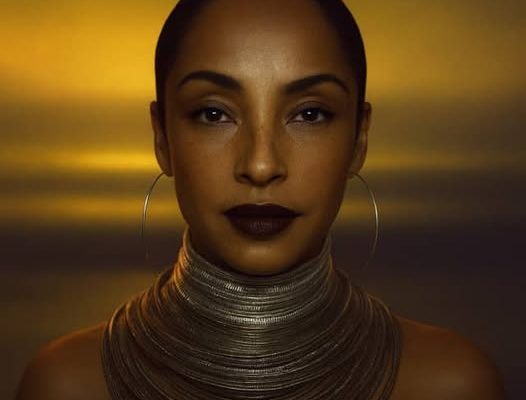The cultural air, thick with the ephemera of fleeting trends and algorithmic churn, stills for a moment. A familiar, yet eternally elusive, presence returns. Netflix has unveiled the trailer for its forthcoming documentary, Sade: The Ultimate Icon, and in doing so, has offered the world a profound and graceful glimpse into one of music’s most enigmatic souls. This is not merely the release of a promotional clip; it is a seismic event in the landscape of musical biography, a key turning in the lock of a door long closed. For decades, Helen Folasade Adu has cultivated an aura of magnificent remove, a conscious stepping away from the glare of celebrity to protect the very essence of her art. Now, with her blessing and intimate participation, the veil is being gently, partially, drawn aside.
The trailer itself is a masterclass in tone, perfectly mirroring the aesthetic Sade has embodied since her seismic debut with Diamond Life in 1984. It is sleek, sophisticated, and imbued with a profound sense of cool. There is no frenetic editing, no hyperbolic voiceover screaming about revelations and scandals. Instead, we are drawn into her world through a series of arresting images: slow-motion black-and-white footage of the band in their youth, exuding an effortless magnetism that feels both of its time and utterly timeless; contemporary, intimate shots of Sade herself, her eyes still holding that deep, knowing, and slightly melancholic gaze; and glimpses of the creative process, the sacred space where the magic is forged. The familiar, haunting strains of a new, orchestral rendition of “The Sweetest Taboo” swell in the background, immediately anchoring the viewer in the lush, emotional soundscape that is her signature.
What becomes immediately apparent, and what sets this documentary apart from the standard music biopic, is its authenticity. This is not a project assembled from archival clips and second-hand testimonials. This is Sade’s story, told in her own words and on her own terms. Her voice, that speaking voice as smooth and compelling as her singing, narrates the trailer. We hear her reflect on her art, her identity, and the conscious choice to step away from the spotlight. “I’m not a pop star,” she states, a simple declaration that carries the weight of a forty-year career spent defying categorization. This statement is the thesis of the documentary and the core of her being. She is an artist, a songwriter, a bandleader—a woman who created a universe of sound and feeling so complete that it required no external noise to validate its existence.
The anticipation surrounding this film is a phenomenon in itself, a testament to the unique and enduring power Sade holds over the global imagination. In an era of oversharing, where artists are expected to be constantly accessible, constantly content, her silence has been deafening. Her absences between albums—stretching years, sometimes a decade—were not perceived as failures but as necessary periods of gestation. Each return was not a comeback, but a reappearance, as if she had simply been away gathering more of the profound emotional intelligence that saturates every note she sings. This documentary is the answer to the quiet, respectful yearning of her fans. It is the opportunity to understand, if only a little, the well from which this deep water flows. How does one create music that feels both like a quiet confession and a universal truth? How does one maintain artistic integrity in the face of immense global fame? The trailer promises that these are the questions the film will explore.
Crucially, the documentary is not just about Sade the icon, but Sade the band. The footage makes it clear that the profound alchemy of their sound is a collective effort. We see Stuart Matthewman, Paul Spencer Denman, and Andrew Hale—the unwavering architects of the sound alongside her. Their longevity and loyalty are as rare as her talent. They are a unit, a family, and the film appears to honor that dynamic, exploring the collaborative spirit that has produced six flawless albums over four decades. This is the story of a quiet revolution, a group that changed the face of pop and soul without ever raising its voice, proving that sophistication, subtlety, and soulful depth could achieve monumental, worldwide success.
The cultural impact of Sade is immeasurable, and this documentary will serve as a vital historical record of that influence. She arrived at a time of synth-pop explosion and hair-metal excess, a figure of breathtaking elegance and minimalist cool. She was a Black woman fronting a multi-racial band, making music that defied genre, drawing equally from soul, jazz, pop, and sophisti-pop. She presented a vision of Black femininity that was cosmopolitan, introspective, and powerfully serene. Her influence echoes through generations of artists, from the trip-hop of the 90s to the alternative R&B of Frank Ocean, Solange, and The Weeknd, all of whom have drawn from her blueprint of atmospheric melancholy and emotional precision.
Yet, for all the discussion of her mystery, the trailer hints that the real revelation of the documentary may be its portrait of Sade’s profound humanity. The glimpses of her laughing with her band, of her looking thoughtfully at old photographs, of her simply existing in a moment of unguarded stillness—these are the moments that feel most precious. They suggest a woman who is not a recluse, but a person who made a conscious and courageous bargain: to exchange the trappings of fame for a real life, in order to have real feelings to write about. The music was never an act; it was a reflection of a lived experience, and to protect its truth, she had to protect herself from distortion.
Netflix’s Sade: The Ultimate Icon is poised to be more than a documentary. It is a cultural event, a moment of collective appreciation for an artist who has given the world so much while asking for so little in return. It is the respectful, elegant tribute that her legacy deserves. The trailer does not promise salacious details or forced drama; it promises understanding. It promises to take us closer to the heart of a woman whose voice has been a solace, a comfort, and a source of strength for millions. It is an invitation to finally meet the artist on her own terms, in her own time, and to understand that the mystery was never a gimmick—it was the very source of the magic. When the film arrives, the world will finally lean in a little closer to listen, not just to the music, but to the story behind the silence. And if the trailer is any indication, it will be a story told with the same quiet power, grace, and soul that has defined her unforgettable career.



